Therapeutic assessment is an innovative approach to psychological evaluation, which relies on collaboration between the assessor and client (and therapist, if applicable), as they work to help clients re-conceptualize their lives and move forward in their healing.
A therapeutic assessment uses psychological evaluation as a brief psychotherapeutic intervention.
Benefits to patients include accelerated symptom change, increased hopefulness about their problems, improved self-esteem, increased satisfaction with assessment, and better compliance with treatment (see TA: 3 Important Questions).
Collaborative and Therapeutic Assessment was developed by psychologists Stephen Finn, Ph.D., Constance Fischer, Ph.D., Leonard Handler, Ph.D., and others.

S. Finn

C. Fischer

L. Handler
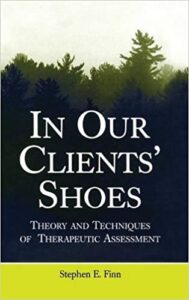
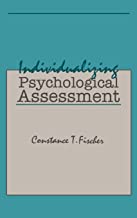
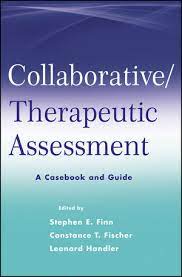
“Through collaborative exploration, clients experience themselves as having options, as being agents.” (Fischer and Finn, 2008) The client learns that he or she can change his or her life.
The core values of collaborative and therapeutic assessment are:
- Collaboration (between assessor and client)
- Respect
- Humility
- Compassion
- Openness and Curiosity
In traditional assessment, psychological tests are used for diagnosis, treatment-planning, and treatment evaluation. The emphasis is on the collection of standardized data by an “expert”, who compares this data to norms and conveys conclusions to the patient and/or to a treatment provider.
In collaborative and therapeutic assessment, psychological testing is more than just the collection of useful data. The goal is to make the assessment a positive and useful experience for the client, and to help create positive therapeutic changes for the client and to enhance the impact of future psychotherapy. (see Psychotherapy Works)
Therapeutic assessment can lead to positive psychological change for many clients
Research has demonstrated that after a therapeutic assessment, many clients experience less distress and have higher self-esteem. In addition, valid and useful test data are collected, which may be used for diagnosis, treatment planning, or documentation of change after treatment.
Documented benefits to clients, from research on therapeutic assessment include:
- Decreased symptoms in adults, children, adolescents, and couples
- Increased self-esteem
- Increased hope
- Better compliance with treatment recommendations after assessment
- Better treatment alliance with a subsequent psychotherapist
(For details, go to www.therapeuticassessment.net )
Steps in therapeutic assessment
- In the Initial Session the assessor and client develop questions, i.e.,what the client and/or family wants to learn from the assessment. The assessor collects background information. During this session therapists, if involved, also suggest questions. The adolescent and their parents are asked to generate assessment questions.
- Psychological testing (cognitive, achievement, and/or personality) is administered using standardized procedures.
- In an Assessment Intervention Session, non-standardized tests, tests used in novel ways, or family exercises are used to help clients to discover answers to their questions.
- A Summary/Discussion Session is a collaborative effort by the assessor, client, family, and referring therapist to jointly discover and refine answers to assessment questions.
- Written Feedback Provided to Client. A letter is written to the client, addressing his/her questions. Children are typically provided results in the form of a fable, written specifically for them..
- Follow-up Session, 4-8 weeks after the summary discussion, to consolidate gains.
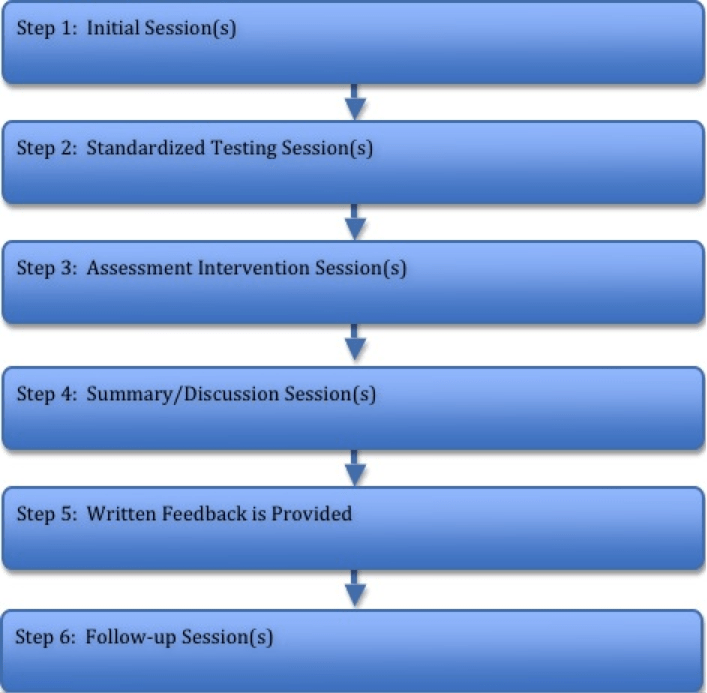
In the Initial Session Assessment Questions are gathered . In traditional assessment, the referral/assessment comes from an outside expert; e.g. a therapist or a psychiatrist. Questions like– 1) ‘is this patient psychotic or borderline’; 2) ‘does this patient suffer from a personality disorder’; 3) ‘does this patient need medication’– are to be answered by psychological testing.
In traditional assessment, the questions are not shared with the patient. In fact, little information is shared with the patient at all. Feedback is usually given to the referral source. Sometimes there also is feedback to the patient or their family, but this is limited and does not include some of the information given to professionals. The patient is not asked for feedback on the conclusions offered by the assessing psychologist. Conclusions are unilateral in that the patient does not participate in constructing them
In a therapeutic assessment’s first session, even before history taking, a collaborative process is established. It is explained to the patient (and their family if they are a minor) that the referring therapist has sent the patient to get certain questions answered, but that the evaluator wants to know what questions the assessment can answer for the patient and the family. The assessor helps the patient to clarify, refine, even generate questions based on the history and current functioning. The evaluator’s primary task throughout is to be sensitive, attentive, and responsive to the patient’s/family’s needs and to foster opportunities for self-discovery and growth through the assessment process.
If a child is old enough, he or she will be invited to pose questions. Tests are selected to assess the individual’s questions, as well as the family (and therapist, if applicable.
Step 2: Is similar to traditional assessment, in which psychological tests are administered in their standardized fashion. This could include (if appropriate to the questions developed in Steps 1 and 2): 1) cognitive tests, including IQ, achievement, neuropsychological, memory, attention and executive function assessments; 2) emotional and personality tests, including self-report tests
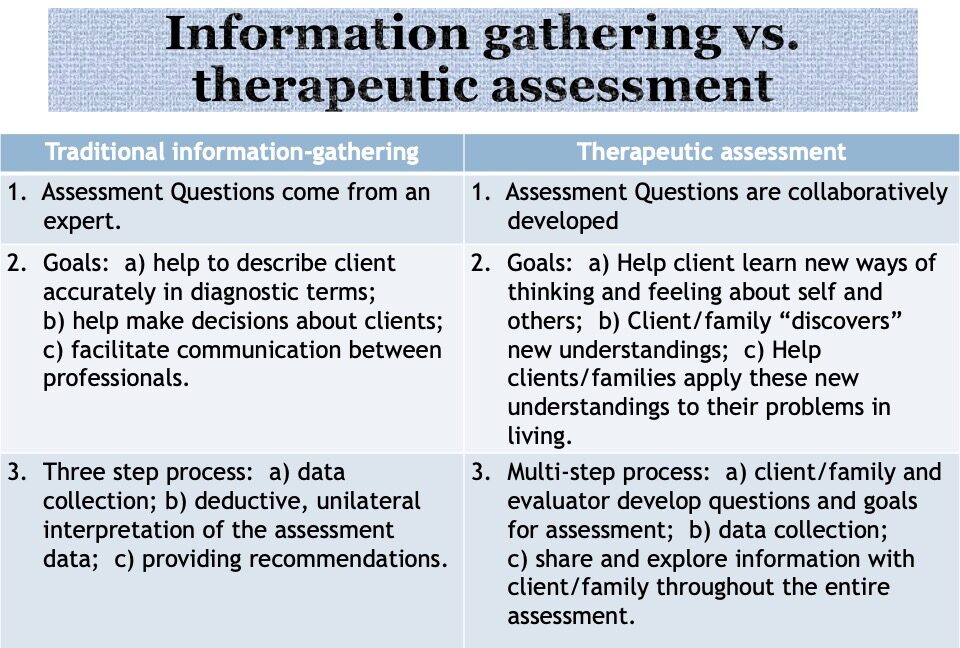
Psychological tests are employed, not just as “diagnostic instruments.” They are used that way, but also as opportunities for dialogue with the patient and/or family about their characteristic ways of responding to problem situations. The focus throughout the assessment is on the process occurring between clients and assessors and the client’s subjective experience. In a successful therapeutic assessment, the client feels respected, understood, and listened to by assessor, and the client and family acquire. new understandings and opportunity to change
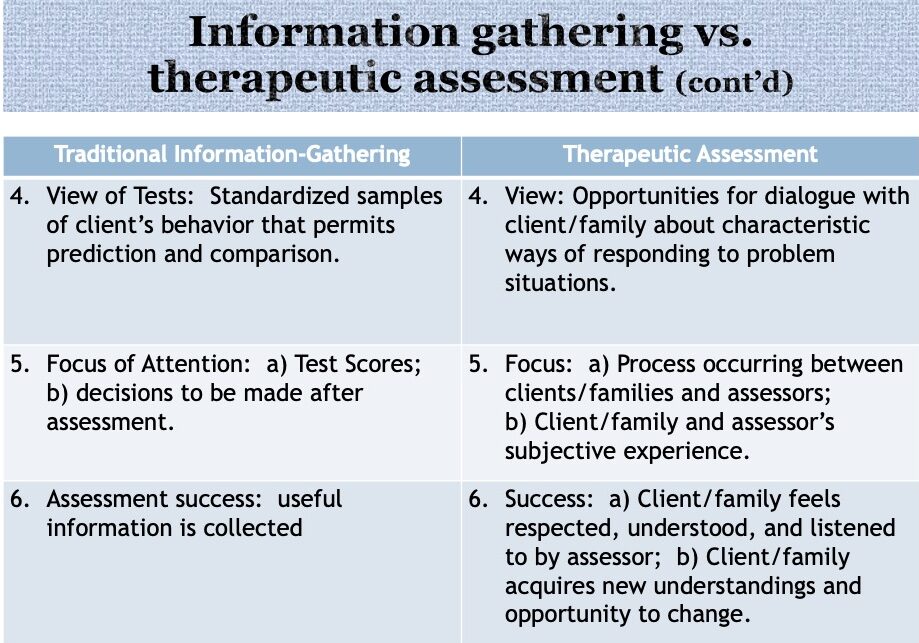
•Summary and Discussion are usually 2-4 weeks after onset of the assessment. Not only do the patients/parents a referring professionals get a report, but in many child cases the child also receives written feedback in the form of a fable.
See an example of a child Therapeutic assessment here: “A 6 year old dysregulated boy.”
Brief Case example (14 year old adolescent):

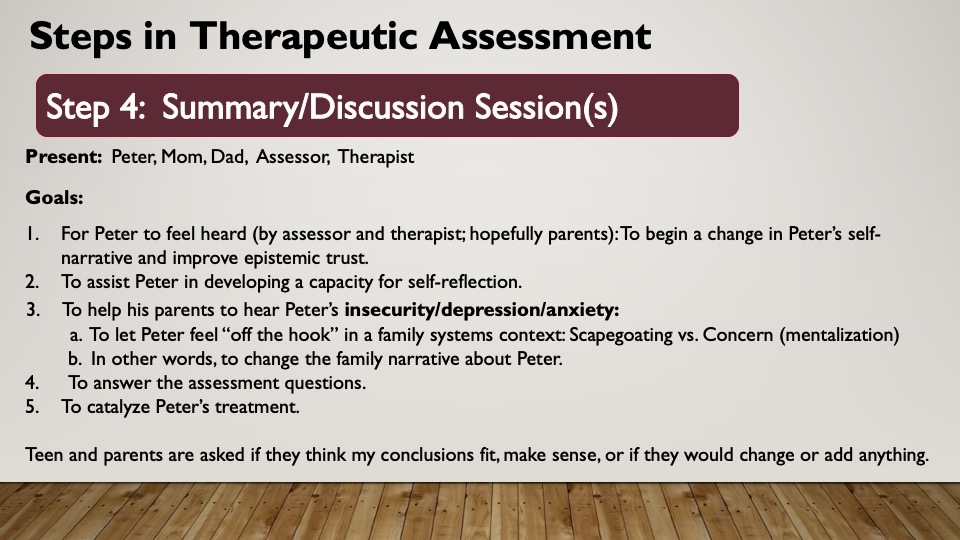
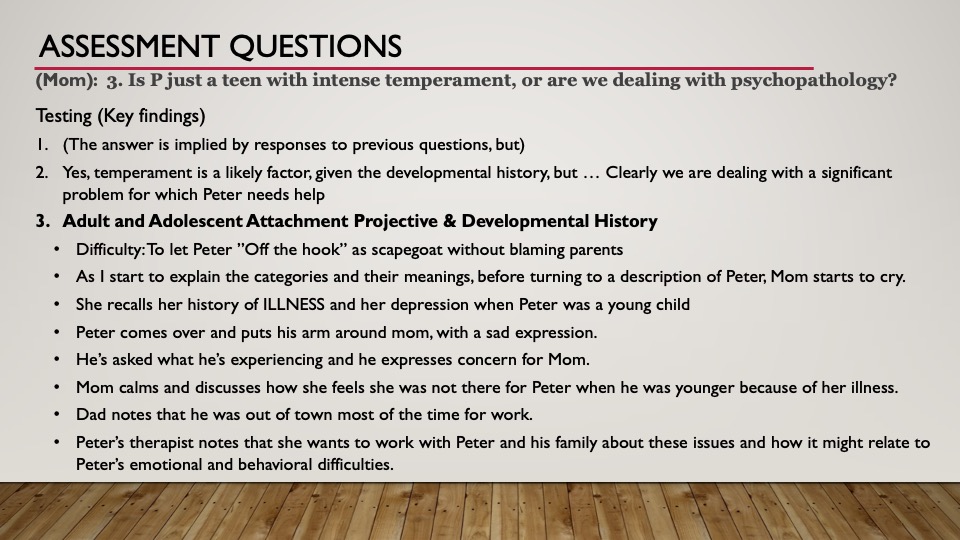
- Three Important Questions about Therapeutic Assessment (Next page)
- Therapeutic Assessment Information Sheet for Adult Clients (.pdf)
- Therapeutic Assessment Information Sheet for Parents (.pdf)
- Therapeutic Assessment Information Sheet for Teenagers (.pdf)
- Therapeutic Assessment Institute (TAI website)
- Therapeutic Assessment Bibliography (TAI website)
- Therapeutic Assessment with Children